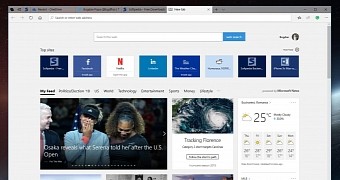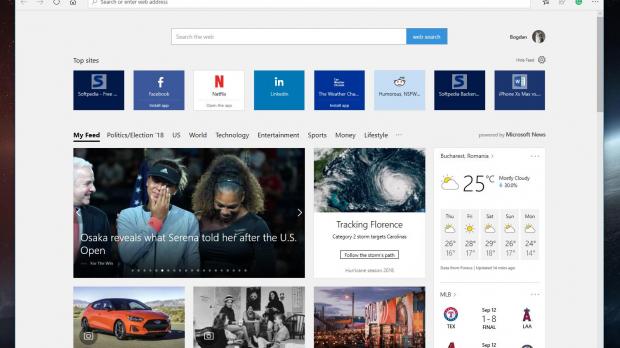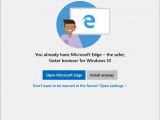Microsoft trying to convince users to stick with Edge browser isn’t entirely a new thing, as the company has been struggling to increase its browser userbase ever since it rolled out Windows 10.
Sometimes, however, the Redmond-based software giant turns to tactics that can easily be considered way too aggressive against its very own users.
In the past, Windows 10 displayed popups right on the desktop to highlight Edge capabilities, while in some rare cases, the default browser was reset when the operating system was updated.
Microsoft’s efforts to force users to try out and eventually run Edge as their daily drivers have pretty much failed, according to third-party data.
NetMarketShare, which is one of the leading market share data providers on the desktop, shows that Microsoft Edge is being used on a little over 4 percent of PCs, while Google Chrome, which right now is the number one choice in the browser world, has a share of more than 60 percent.
The difference is huge, and despite Microsoft struggling to bring more users to Edge, pretty much everything has been unsuccessful.
And yet, most recently the world’s number one software company has once again turned to tactics that are likely to do more harm than good.
Whenever users attempt to install Google Chrome or Mozilla Firefox, a warning shows up to remind that Microsoft Edge is already there on Windows 10. Microsoft interrupting the installation of third-party browsers is certainly a thing that you didn’t expect, and the company says it’s only an experiment. For the time being, at least, the company wants to see how this new approach is received by the user community.
Microsoft is only trying out this behavior on Windows insider builds, and at this point, there is no plan to include it in the upcoming October 2018 Update launching next month.
However, such an approach can’t do anything good, and even worse, it only fuels the criticism that the software giant receives whenever it tries to promote Edge in a more aggressive manner.
First and foremost, interrupting the installation of third-party browsers can only lead to more frustration among users, as this makes the process as a whole take longer. This eventually affects Windows 10, an operating system that was built on the concept of boosting productivity as much as possible.
Second, by bringing these warnings in Windows 10 preview builds, Microsoft is going after the wrong audience here. Windows insiders are most often power users who are skilled enough to decide which browser they want to use, and such ads aren’t exactly their cup of tea.
A similar idea was criticized from the very beginning earlier this year when Microsoft wanted to make Edge the default browser for links in its Windows 10 apps. Most of the insiders blasted the company for forcing them to stick with a specific browser, and Microsoft eventually dropped the plan, letting users open links in their default browsers.
If there’s anything to learn from all of this is that forcing a specific app on users is never a good idea, and most of these decisions eventually backfire in one way or another.
For now, Microsoft hasn’t even made this behavior broadly available to insiders, and it’s pretty clear that nobody agrees with it. Fortunately, feedback is still important for the company, so don’t expect this new aggressive push for Microsoft Edge to make it to Windows anytime soon.
On the other hand, the company doesn’t seem too willing to give up on its strategy of making Edge a more widely-used browser one way or another, so expect similar ideas to make it to Windows 10 sooner or later.

 14 DAY TRIAL //
14 DAY TRIAL // 



